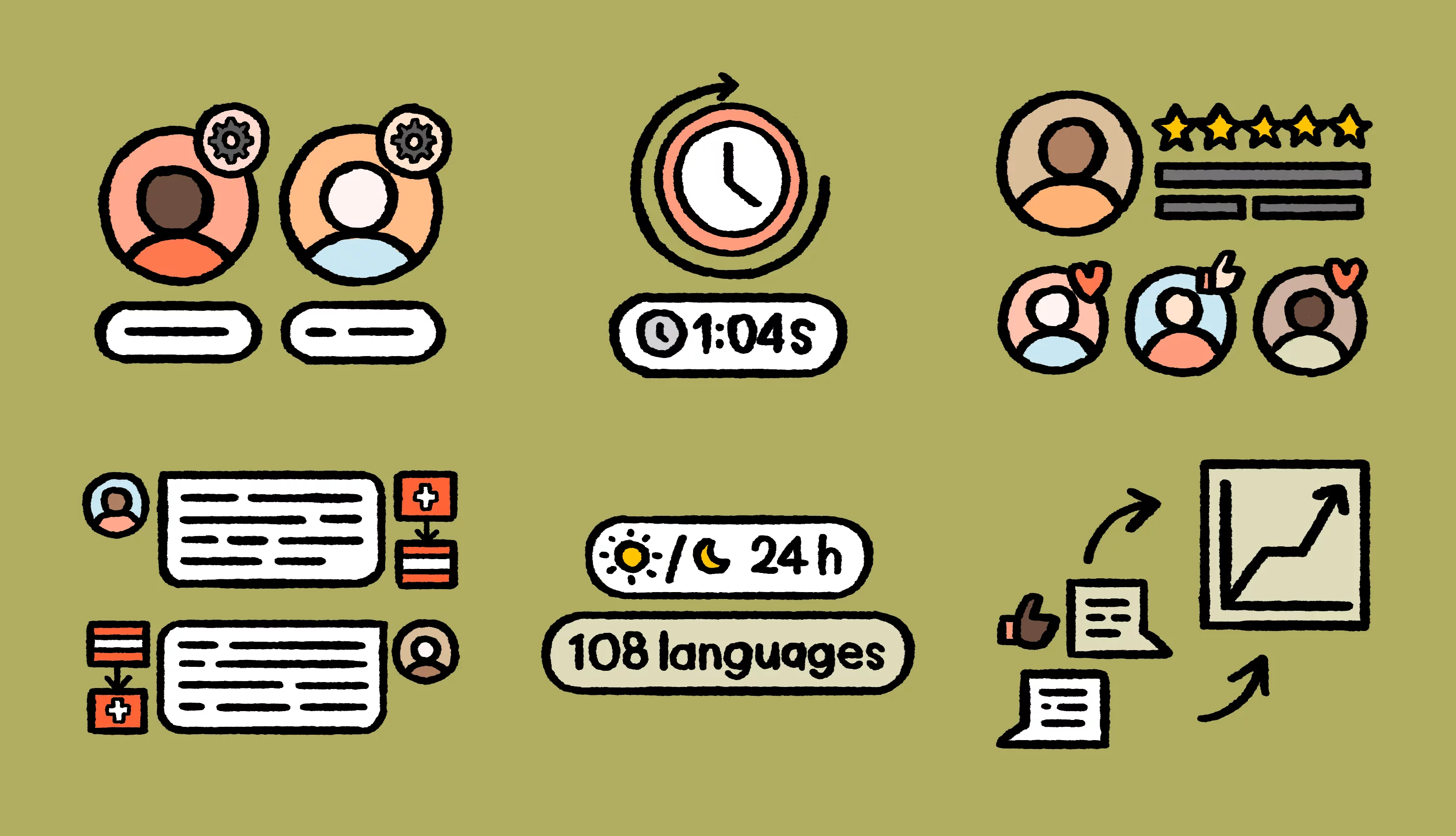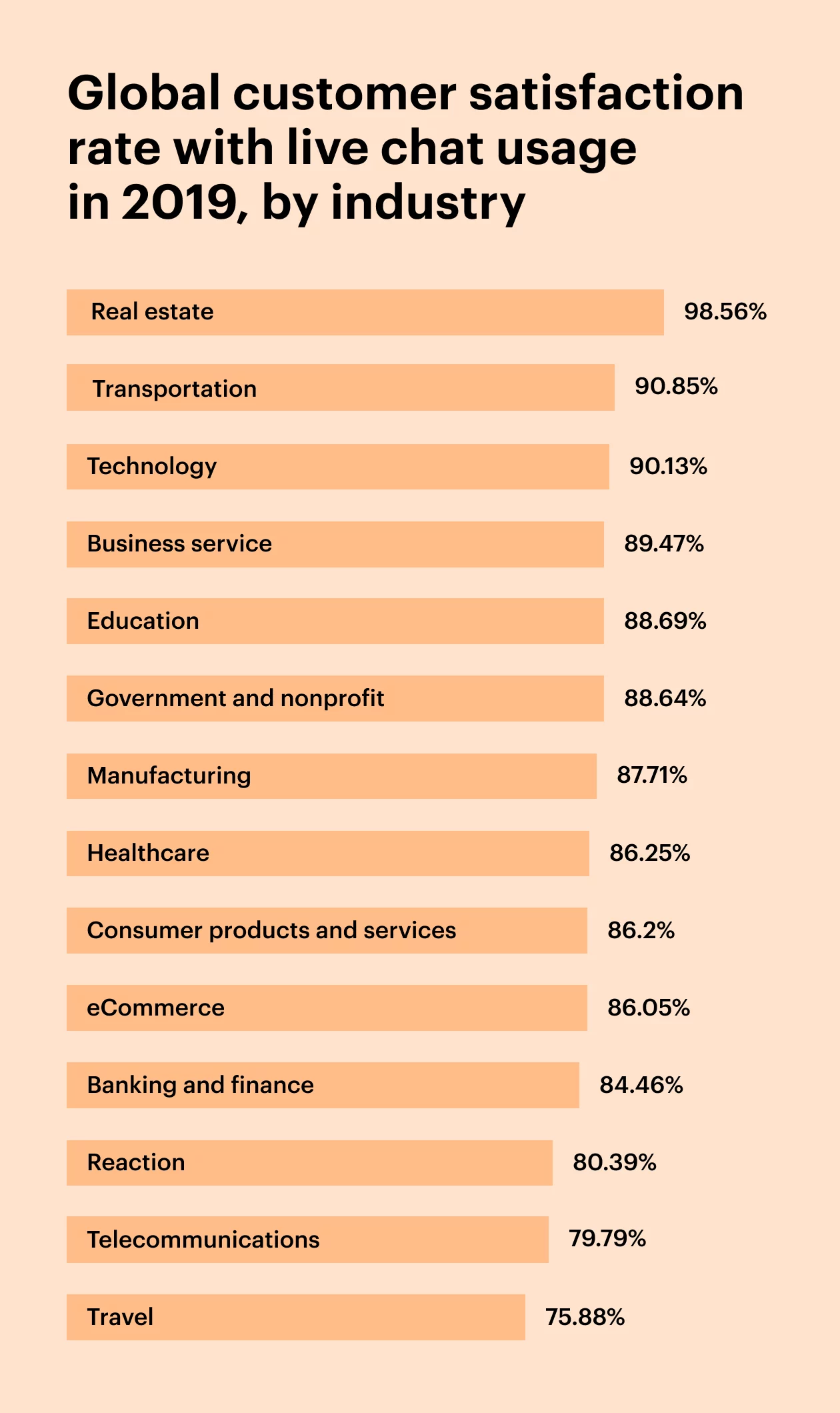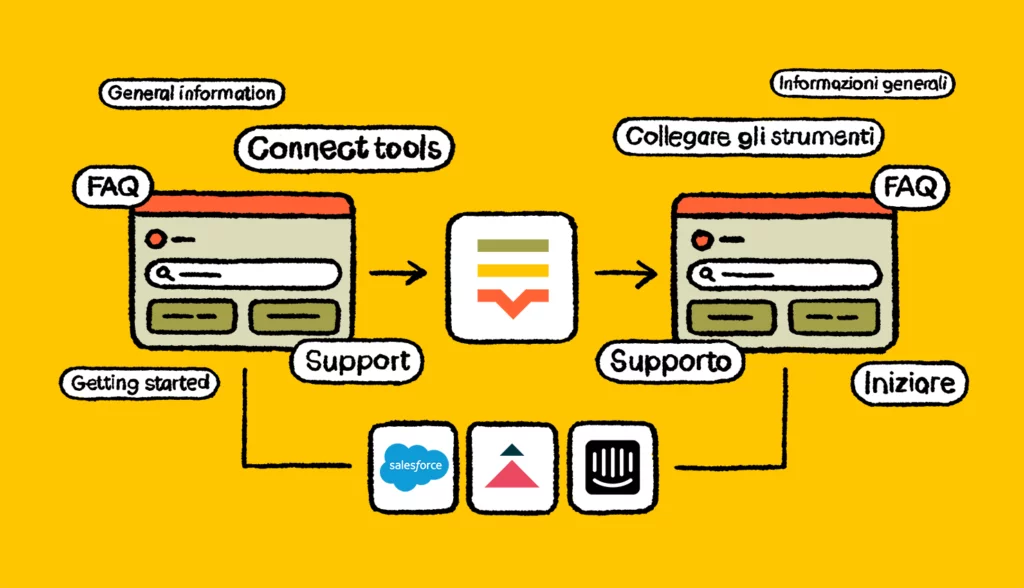Support-led growth: How to turn customer service into a sustainable growth engine
We’ve recruited a team of inspiring support leaders from Intercom, Plum, and Doxy.me to give you actionable strategies to turn customer service into a sustainable growth engine.
‘Companies everywhere are realizing that their service is not measured against that of the local sausage factory but the best global brands in the world, which have now become part of daily life.’
–Martin Kõiva, CEO, Klaus
Technology is making the experience of getting and giving assistance more efficient. It’s expected of any modern company nowadays, and we don’t need to sell you on the value of great customer experience.
We want to talk about what world-class customer experience looks like today and how our (small) support team enables those experiences for our customers at scale and in any language.
A new definition for customer support
| Stereotypical customer support | The new customer support |
| Viewed as a cost center. | Viewed as a growth center: the face of a company, and a critical component of sales and word-of-mouth marketing. |
| Disempowered and inefficient agents focus on mundane, repetitive tasks with the help of legacy technology (like spreadsheets or the go-to “ask the manager” workaround). | Focused on empowering agents and customers with self-service tools, freeing up agents to deal with more complex and challenging customer requests. |
| Requires customers to call during specified business hours and often wait on hold for help. | Round-the-clock support backed with the rise of digital channels and self-service options: website knowledge base with FAQs and support documentation, virtual agents, email, chat, social media, etc. |
| Call centers relegated to cubicles or outsourced to other locations/countries for cost-efficiency requirements, straining access to internal company knowledge. | Works side-by-side with other teams using new technology that empowers remote work and has a seat at the table in company decision-making. |
| Operational metrics tied to cost-cutting: average handle time (AHT), average talk time (ATT), service level (SL), repeated contact rate, call resolution times, etc. | Holistic metrics tied to company-wide goals: Net Promoter Score (NPS), customer satisfaction (CSAT), customer effort score (CES), first contact resolution (FCR), etc. |
What ‘great customer support’ means to us
Most companies claim to provide great customer support. But not all customers (a whopping 80% according to Qualtrics) have a great experience, so clearly there’s room for improvement.
Reflecting on their previous venture, our co-founders shared that they didn’t place enough emphasis on providing great support. With Lokalise, they wanted to change that, starting with a focus on the fundamentals: delivering on our company values and consistently exceeding customer expectations.
1. Delivering on our company values
One of Atlassian’s core values is “Don’t #@!% the customer.” Too direct? Maybe. But this means the support team (and the entire company) never breaks that value, and because it’s public, their customers expect to be looked after.
If your company values honesty or speed, those values should inform your definition of great support, and your team should be set up to deliver on those values.
One of our company values is “Be direct but kind. Put yourself in others’ shoes.” The ability to communicate directly and with empathy underpins our entire support process. We understand what customers want to achieve and offer the best solution possible.
2. Consistently exceeding customer expectations
Standing out from your competitors = consistently exceeding your customers’ expectations. Here are two simple questions we ask ourselves to achieve this:
1. What are the typical response times in our industry? How can we improve those times?
2. What level of support are our customers used to, and how can we repeatedly exceed their expectations to delight them over time?
These high-level expectations combined with a mindset of continuous improvement guide our standards for support, and it’s worked pretty well for us so far. Just take a look at our G2 reviews and you’ll see support is our secret weapon.
Here’s how we do it day in and day out.
Day to day: how busy are we?
We have a team of 14 people responsible for talking with our customers every day. We get unique cases from customers trying to solve complex technical problems, so all of our team members have technical backgrounds.
Additionally, our team must cover several time zones, so we are distributed to offer cover 24 hours a day and for 108 languages using Lokalise Messages for Intercom.
Did you know you can now translate conversations between customers and support agents in real time with Lokalise Messages for Intercom?
Learn moreWhat channels we support
When you’re committed to providing great customer support, it’s tempting to say, “We’ll be available on every channel all the time!”, but small teams almost certainly can’t provide consistently great support across all channels and time zones.
That’s why live chat is our primary support channel. We also provide support by email, but the number of our customers who choose this option is far lower. Our customers love it, and the data is clear: given a choice, the typical customer will choose a real-time support option (phone or chat), over email or social channels.
Just take a look at this chart showing global customer satisfaction rates with live chat usage across every industry:
Pro tip: It’s better to provide quality customer support on a few channels than to spread your team too thin and give inconsistent support. So how do you choose which channels your support team will monitor? Find out what your customers are using and make sure you’re available on those channels.
What we measure
Customer satisfaction (CSAT): a metric used to measure how satisfied customers are with a specific interaction or experience. CSAT is one of the two most popular metrics, the other being Net Promoter Score (NPS). Each metric has strengths and weaknesses.
Note: CSAT is not all that. Customer satisfaction surveys are a very blunt tool for measuring a very specific range of customer experiences. They don’t take into account the person just having a good day, the person who really loves your product, and the person who genuinely had an excellent customer support interaction.
That doesn’t mean it’s useless, but watching the trends and using the results carefully (in conjunction with other metrics) is always best to attribute meaning to specific changes.
First response time: It is important to know how long customers wait before they hear back from anyone. Being an easy stat to game, however, makes this an unreliable performance indicator.
The question then remains: how do you make sure you are on the right track?
Measuring the right data
Many customer support activities are easy to measure. Your customer support software (we use Intercom) will produce detailed reports (like the above), but it can’t tell you which numbers really matter to your team and what you need to do about them.
Here are three big, broad questions that will help you decide which metrics matter most to your situation:
- Why are you reporting?
- Who are you reporting to?
- What do you want the outcome to be?
Measuring performance beyond the numbers
“When a measure becomes a target, it ceases to be a good measure.”
As soon as we try to manipulate behaviors to alter a measure, it’s no longer useful. Most metrics don’t measure anything except whether someone is good at making them go up.
If you measure quality, but only ever reward or praise reply quantities, your quality program will stay on the sidelines. If, on the flip side, you have clear quality metrics and highlight them consistently, then your quality reviews will have an impact.
While we don’t tie our support team to revenue metrics, their work is crucial when it comes to retention, expansions, and customer loyalty.
Aside from a great product, our support is often one of the top reasons our customers use Lokalise to localize.
In both B2C and B2B, it’s evident that customer support is not just customer support but also sales, marketing, branding, and customer success. As these disciplines blur, customer support is directly impacting business results.
There’s a downside to rapidly increasing customer expectations: providing fast, excellent support to everybody at all times is hard. Making that balancing act work is definitely making customer support in 2022 a much steeper challenge than 10 or 15 years ago.
Note: We don’t use metrics as part of our team’s performance review process but rather as a set of indicators of the overall health of our team.
Better tools save (and make) money and help deliver better support
How do you increase the number of conversations and languages a team can answer in without adding a ton of headcount?
Our use of Intercom has been instrumental in supporting our users. Users send messages through the live chat widget on the website, which forwards to Intercom. New messages are initially routed to the unassigned inbox and it’s up to the agents to take ownership of the cases to collectively ensure no customer is left waiting.
We like to practice what we preach, so we’ve been using Lokalise Messages for Intercom for months before its official launch. It’s been key to supporting our international users, allowing our agents to deal with queries in any language from anywhere in the world.
Live Demo: Lokalise Messages for Intercom
Learn how to leverage Lokalise Messages for Intercom to translate conversations between customers and agents in real time.
Watch on-demandThe right team can scale up without compromising quality
Hopefully you’ve discovered a few levers for managing your support team’s growth (and budget) on your own, but here’s a quick spotlight on 4 major lessons:
- Support teams can only offer support as good as the rest of the company will allow. If your CEO is Michael O’Leary circa 2012, forget about it.
- Define great customer support for your company. Focus on the fundamentals (values and your customers) to consistently deliver it.
- Better tools save money and help deliver better support. Focus on expertise instead of language skills with Lokalise Messages for Intercom.
- Show your customer support team some love.
- Download our support-led growth ebook that’s filled with insights from inspiring support leaders at Intercom, Plum, and Doxy.me, and a whole lot more.
Support-led growth: How to turn customer service into a sustainable growth engine
We’ve recruited a team of inspiring support leaders from Intercom, Plum, and Doxy.me to give you actionable strategies to turn customer service into a sustainable growth engine.





